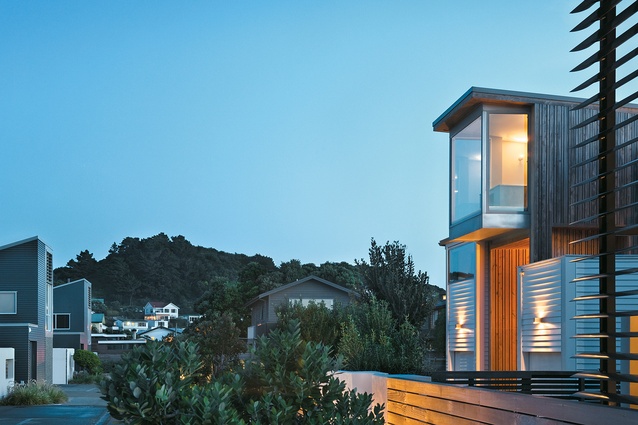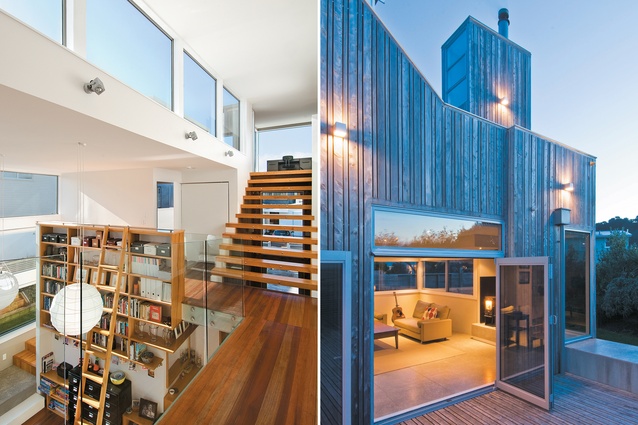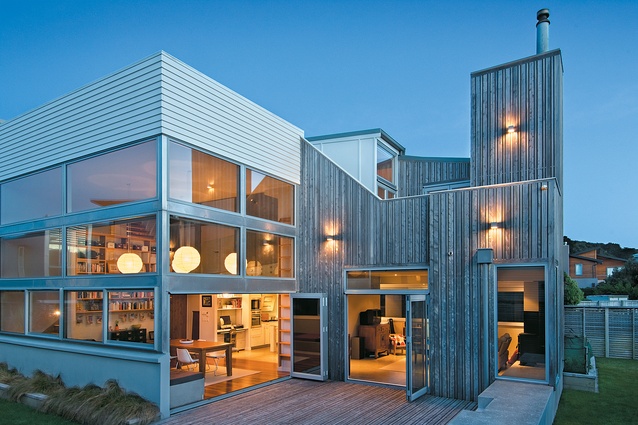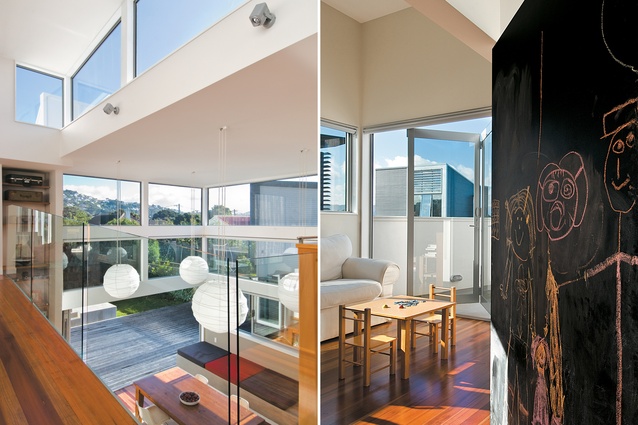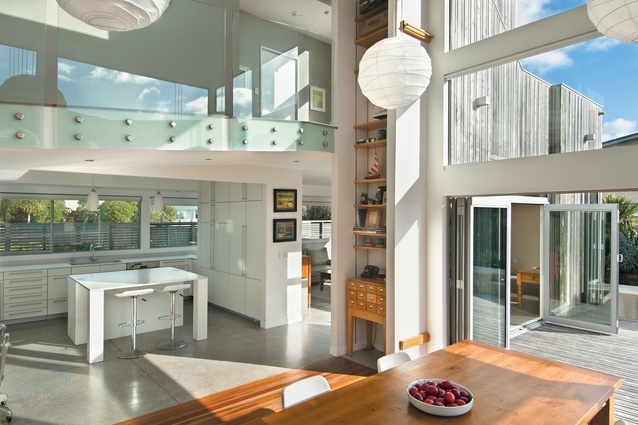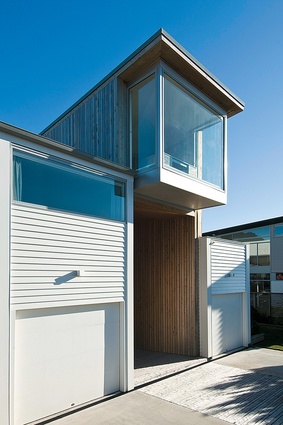Houses Revisited: Adventure in toytown
In this Wellington home, first published in 2009, Uche Isichei has designed an unconventional house for a once-sleepy suburb.
Seatoun, located on the far side of the Miramar peninsula, just inside Wellington Heads, spent a pleasantly somnolent twentieth century. The seaside suburb gently evolved into a stable middle-class community with quite a full complement of social institutions: several churches, a couple of primary schools and, for many years, an orphanage, an RSA and a lawn bowling club, a soccer club. There was no pub – Wellington’s Eastern Suburbs were dry for decades – but there was an army base, which sat as incongruously in its neighbourhood as the naval base sits in Devonport, the Auckland suburb with a close familial resemblance to Seatoun.
For years, there was a butcher, a greengrocer, a stationer’s, a post office, and a milk bar – a village centre. The British migrants who settled in Seatoun – it’s always been popular with the Poms – must have pinched themselves: but for the wooden construction of the suburb’s villas and cottages the whole place could have been lifted from the English south coast. And the water that washes up on Seatoun’s stony beach is just as cold.
The stretch of coast that arcs around from Seatoun beach to the lifesaving club and old concrete diving board at Worser Bay is an extraordinary little strip. On one side, family-friendly mini-bays ideal for crab-finding expeditions and just enough clear water between kelp and mollusc-coated rocks for a (very) quick dip; on the other, a line of idiosyncratic houses, many of them one step up from baches, rubbing shoulders on narrow sections that back into the steep hill that cuts off the afternoon sun and serves to contain Seatoun’s small world.
This was a place, it seems clear in retrospect, just waiting to be discovered. A paucity of building plots and the distance to the CBD – it’s all of 15 minutes to town by car, but once you’re through the Seatoun tunnel, the CBD seems remoter than that – had preserved Seatoun’s innocence. It’s windy there, too – the northerly howls across the harbour, the southerly rages through the Heads – but that was probably not so off-putting: where in Wellington isn’t buffeted?
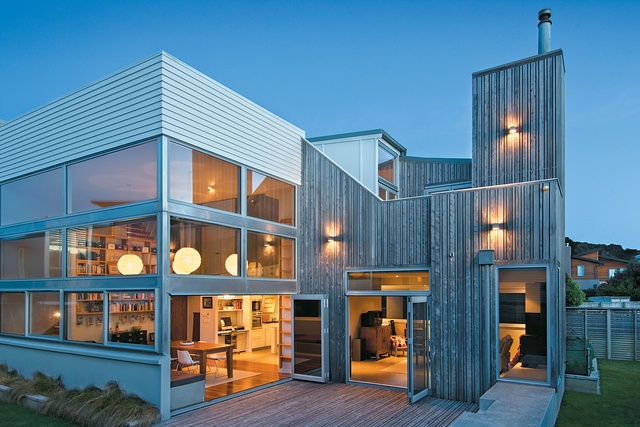
Two occurrences conspired to make Seatoun a more des res: the army’s abandonment of Fort Dorset and the subsequent sale of much of the camp’s land, and the advent of Peter Jackson’s movie empire. Weta, which is based just over the hill in Miramar, has worked wonders for the New Zealand film industry; it has also worked wonders for the Seatoun property market.
Architecture in the suburb, some eccentricity excepted, had always been rather understated and conventional. Differences tended to be expressed in scale, not style, but in the last decade building has become far more self-conscious. The new development on former army land at the east end of Seatoun beach has become something of an architectural theme park: it’s a Skansen of contemporary Wellington practice.
In this company, Uche Isichei stands out as a free spirit. The house he has designed, for a family lured to New Zealand by Weta’s workshop, might be bigger and better-appointed than the dwellings around Worser Bay, but its shares with them a non-conformist tendency. Neighbouring houses are competently designed but they don’t seem to express much joy; on his project, though, Isichei – and his clients – have had some fun.
There are view-capturing towers at either end of the house, for example, above the street entry and the children’s bedroom at the rear; there are changes of levels; dramatic stairways; a ramp on the second level that’s so long that someone on the ground floor might think there’s a velodrome up there. “A loop runs through the house,” Isichei says, and the design, one suspects, would send a straight-laced client around the bend. The house is intentionally rather restless: the design, of the upper level especially, encourages the scurrying and scampering of children. It’s certainly a house that’s designed for use.
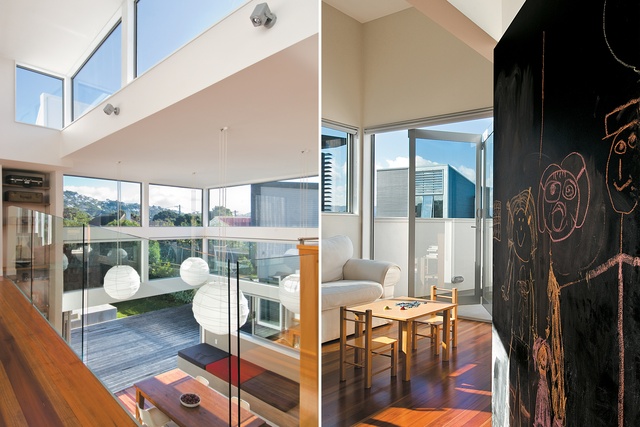
Inside its black-stained macrocarpa carapace the house is as light-filled as the architect could make it. On the north side, a living area with large void above, connects with the terrace and garden. This part of the house – it seems that it’s almost half the house – is so spacious, light-filled and contiguous with the exterior, especially via the heated concrete seat that continues onto the terrace from the living area, that, one of the clients says, “inside seems outside. There’s never a time of day when we never get the sun, and we never get cabin fever”.
Despite the glasshouse-like quality of this side of the house, the interior is comfortable on Wellington’s less balmy days: the ground level aggregate concrete flooring is heated and windows are double-glazed. The large living area has been personalised by the tall shelf system devised and installed by one of the clients.
This is an unusual house, one that fulfils the programmatic requirements of the clients, but which also provides plenty of architectural moments. Too many, perhaps for some tastes – you could never accuse Isichei of being uptight – but the clients have enjoyed this journey to the slightly wilder side of Wellington design. Seatoun might have been a bit of a Toytown, but there’s no nodding off here.
Click here to see more Houses Revisited.
Note: Since the time of writing, the design practice featured may have changed name, personnel or both.

